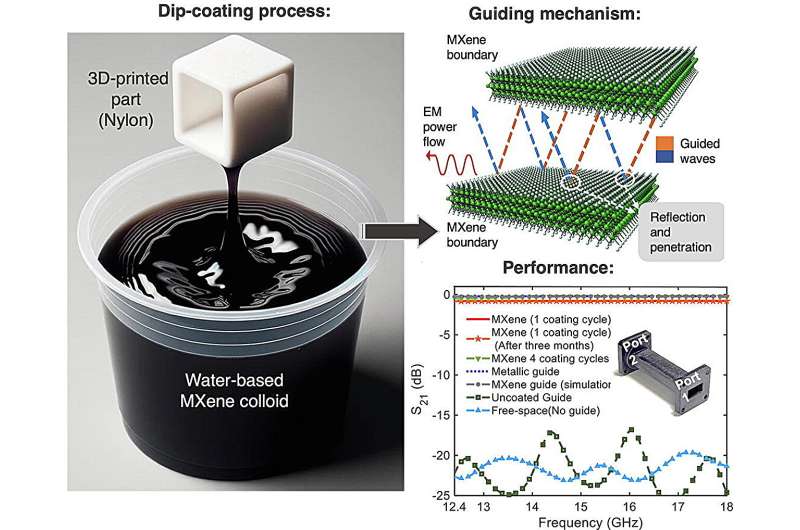Satellites rely on waveguides for telecommunications, which traditionally have been heavy due to their metallic construction. Researchers are exploring lightweight alternatives using 3D-printed polymers coated with conductive nanomaterials.
Significance of Lightweight Components
Reducing weight in satellites is crucial for cost-effective launches and increasing payload capacity.
Role of Waveguides
Waveguides act as conduits for microwaves, directing signals with minimal loss of power. They are essential for various applications, including microwave ovens and satellite communications.
Utilizing MXene Coatings
Researchers from Drexel University and the University of British Columbia are experimenting with MXene coatings for lightweight waveguides. MXene coatings offer conductivity while maintaining lightness.
Advantages of MXene Coatings
MXene coatings provide excellent conductivity and electromagnetic shielding. They can be easily applied to 3D-printed polymer components.
Performance of MXene-Coated Waveguides
MXene-coated nylon waveguides demonstrate significant weight reduction compared to aluminum ones. They maintain high transmission efficiency, reaching up to 95%.
Durability and Versatility
MXene-coated waveguides exhibit durability and stability over time and across different frequency bands. They hold promise for various terrestrial and space applications.
Multiple Choice Questions (MCQs) with Answers:
- What is the primary focus of researchers from Drexel University and the University of British Columbia?
- a) Developing new satellite propulsion systems
- b) Creating lightweight waveguides for satellite telecommunications
- c) Exploring advanced materials for spacesuit construction
- d) Studying deep-space exploration missions
- Which material is used as a coating for 3D-printed polymer waveguide components?
- a) Aluminum
- b) Brass
- c) MXene
- d) Silver
- What advantage do MXene coatings offer over other metallic paints?
- a) Higher cost
- b) Lower conductivity
- c) Better compatibility with polymer components
- d) Increased weight
- How much weight reduction was achieved with MXene-coated nylon waveguides compared to standard aluminum ones?
- a) Approximately 2 times less
- b) Approximately 5 times less
- c) Approximately 8 times less
- d) Approximately 10 times less
- What transmission efficiency did the MXene-coated waveguides achieve?
- a) 50%
- b) 65%
- c) 81%
- d) 95%
